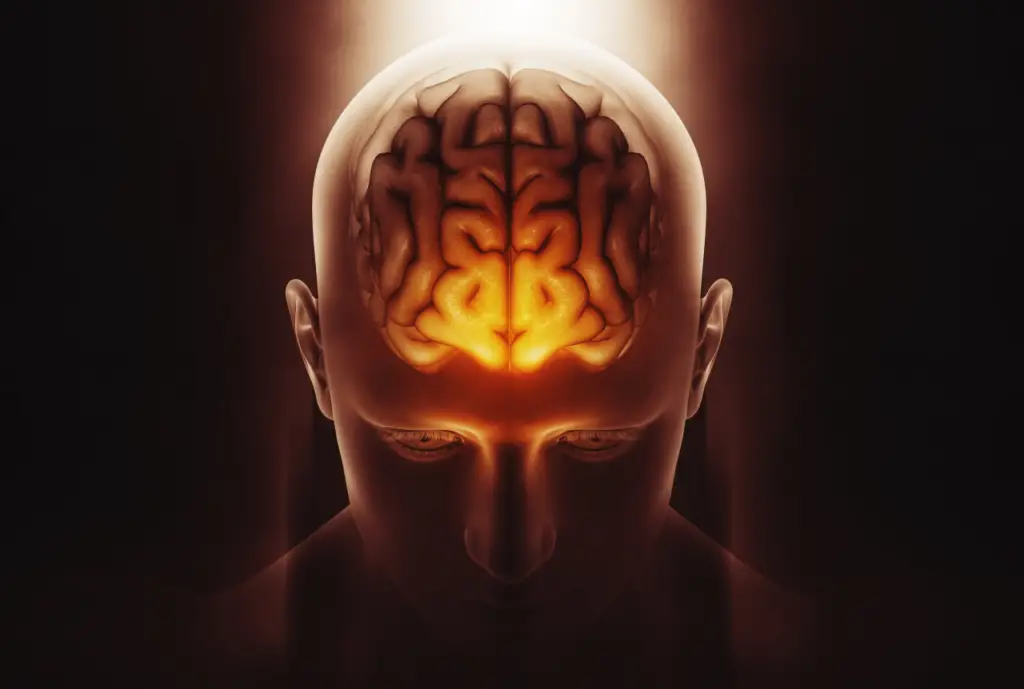Why Do We Dream? Theories and Science Behind Dreaming

Dreams involve complex brain activity, memory consolidation, emotional processing, and evolutionary functions. Understanding sleep stages and brain waves reveals how dreams contribute to our cognitive and emotional well-being.
Memory Consolidation
Dreams play a critical role in stabilizing and reorganizing our memories while we sleep. Different brain waves, like theta and delta waves, are active during various sleep stages, contributing to this process.
Theta waves appear during light sleep, particularly when we first doze off. They help with the initial filtering of memories, determining which information is worth consolidating and which can be ignored. In deep sleep, delta waves take over. This stage, known as slow-wave sleep, is crucial for memory consolidation. Here, the brain embeds the day’s important events into our long-term memory.
During REM sleep, our brains are highly active and vivid dreams occur. It’s also when memory consolidation gets a final boost. REM sleep does more than just reinforce memories; it also seems to remove unimportant or redundant information. This means when we wake up, our minds are sharper, more focused, and better prepared for the day ahead.
Dreams assist in this organizing task by helping the brain identify patterns and connections, cementing useful information while discarding trivial details. During REM sleep, the visual cortex becomes active, creating the vivid scenes we witness in our dreams. Meanwhile, other brain areas responsible for emotions, like the amygdala, also get involved. This can result in emotionally charged dreams that aid in processing confusing experiences.
A study at the Sleep and Neuroimaging Laboratory at Berkeley University showed that REM sleep plays a role in resetting the brain’s emotional reactivity. During REM, the limbic system, particularly the amygdala, may help neutralize negative emotions.
Even the smallest muscle twitches during REM, researchers suggest, help send signals back to the brain, reinforcing sensorimotor learning. In infants and animals, these twitches seem to be critical for developing a synchronized connection between the brain and body, ensuring motor skills are effectively learned and retained.
Emotional Processing

REM sleep, where most vivid dreaming occurs, plays a significant role in managing our emotional well-being. During this stage, the limbic system, particularly the amygdala, becomes active. This region is pivotal in processing emotions like fear and anger.
Research suggests that during REM sleep, the brain attempts to reset its emotional reactivity. The limbic system works on dampening the intensity of negative emotions. By replaying emotional experiences in the somewhat controlled environment of a dream, the brain can desensitize itself to stressful situations, effectively lowering our emotional responses to similar scenarios in waking life.
Dreams also serve as a rehearsal space for coping strategies. Think about dreams where you might be running from danger or confronting an unfriendly character. These scenarios can be seen as your brain practicing emotional responses and coping mechanisms in anticipation of real-life situations.
REM sleep, with its vivid, emotionally-charged dreams, engages the brain in problem-solving, particularly concerning social interactions and personal conflicts. The seemingly chaotic dream environments can serve as a sandbox for resolving unresolved feelings or testing new emotional responses without real-world consequences.
In essence, dreams provide a unique arena where our emotional brains can work through distressing events, calibrate our responses, and defuse negative emotions. They help to maintain our emotional equilibrium, making it easier to face the next day’s challenges with a rejuvenated and balanced mindset.
Evolutionary Purpose

Evolutionary theories suggest that dreams might act as a virtual reality simulator, preparing us for real-life challenges. Our brains use dreams to conjure up frightening or stressful scenarios as a rehearsal space, allowing us to practice our responses without imminent danger.
For instance, dreaming about being chased by a predator or moving through a perilous environment could be your brain’s way of honing survival skills. By simulating these threatening situations, your brain fine-tunes your reaction times, decision-making abilities, and emotional responses. Early humans needed to be alert and fast on their feet, and dreams possibly served as nightly training sessions.
Many other mammals exhibit dreaming behaviors, suggesting that this evolutionary trait could be widespread. When your cat dreams about chasing mice or your dog twitches its paws as if running, they might be rehearsing crucial survival behaviors.
Dreams can also provide innovative solutions to real-world problems, acting as the brain’s own R&D department. The social simulation theory posits that dreams help us manage complex social landscapes. By dreaming of interactions with friends, rivals, and strangers, we sharpen our social skills and better understand societal dynamics.
The adaptive nature of dreams is evident in the way they help us manage stress. By exposing ourselves to stressful but safe dream scenarios, our brains become better adept at handling anxiety and fear in waking life. This desensitization process ensures that when we do face real threats, our responses are more measured and effective.
While dreams can often seem random or nonsensical, they are likely rooted in evolutionary mechanisms designed to enhance our survival. Whether it’s escaping a predator, solving a pressing problem, or handling the intricacies of human relationships, dreaming could be seen as an ancient tool that has helped humanity rise above challenges throughout history.
The Overfitted Brain Hypothesis

Erik Hoel’s overfitted brain hypothesis suggests that dreams act as a kind of ‘noise’ to keep our brains from becoming too specialized in repetitive daily tasks. This theory draws parallels from machine learning, where artificial neural networks can become overfitted when they excel at specific tasks but fail to generalize to new situations.
To counteract overfitting, machine learning engineers introduce random variables or “noise” into the training data. This randomness helps the model become more robust and adaptable to new tasks.
Hoel proposes that our brains might use dreams similarly. Throughout the day, our brains engage in repetitive activities that can make our mental processes too specialized. When we dream, our brains introduce “noise” by creating bizarre, random, and often illogical scenarios. This randomness helps our brains break away from repetitive patterns, ensuring we retain the ability to think creatively and adapt to new situations.
This hypothesis aligns with the concept of increased performance after sleep. Have you ever plateaued in a skill, only to perform better after sleeping on it? According to Hoel, those overnight dreams, filled with strange stories and unexpected twists, provide just the right amount of cognitive “noise” to keep your brain circuits flexible and adaptable.
The overfitted brain hypothesis supports the traditional association between dreams and creativity. Dreams might not be direct messages or insights, but they can expand our cognitive repertoire, offering solutions or innovative ideas that our waking brains couldn’t muster.
While this hypothesis doesn’t encompass all aspects of dreaming, it offers a compelling explanation for one of dreaming’s potential cognitive benefits. By introducing ‘noise,’ dreams may prevent our brains from becoming over-specialized and help us stay agile, creative, and ready to tackle a variety of challenges.
Dreams and Brain Activity

Throughout the night, our brain cycles through various stages of sleep, each characterized by distinct types of brain waves and varying levels of activity in different brain regions. Sleep can be divided broadly into non-REM (NREM) and REM stages.
NREM sleep consists of three stages, each marked by progressively slower brain waves:
- Stage 1: Alpha and theta waves
- Stage 2: Sleep spindles and K-complexes
- Stage 3 (slow-wave sleep): Delta waves dominate, marking the deepest level of relaxation and memory consolidation
During REM sleep, the prefrontal cortex, responsible for higher-order thinking and decision-making, becomes less active. This reduced activity explains why we often accept bizarre dream content without question. The default mode network (DMN), involved in self-referential thoughts and daydreaming, might be partially active during REM sleep, contributing to the structure and emotional intensity of dreams.
REM sleep is characterized by beta waves, similar to those during wakefulness. These waves contribute to the formation of intricate and vivid dreams. The brainstem sends bursts of signals to the visual cortex, activating the vivid visual imagery we experience in dreams. Theta waves become significant during this phase, facilitating creativity and problem-solving.
During REM sleep, sensory input from the environment is minimized, effectively placing us in a “hallucinatory” state where internal stimuli dominate the experience. This interplay of internal stimuli conjures a vivid dream world, giving our brain a stage to experiment with scenarios we wouldn’t normally confront in waking life.
The variety of brain waves and differential activity in specific brain regions during sleep stages highlights the intricate processes that contribute to dreams. From the reduced rationality overseen by the dormant prefrontal cortex to the self-referential dreams powered by the default mode network and the intensified visual simulations during REM sleep, our brains remain highly active during this nightly journey.
Dreams serve as a vital component of our mental toolkit, helping us process emotions, consolidate memories, and maintain cognitive flexibility. Their role in keeping our minds organized and prepared for daily challenges is invaluable, even if they often seem puzzling or random.
REFERENCES
- Izawa et al. REM sleep-active MCH neurons are involved in forgetting hippocampus-dependent memories. Science. 2019;365(6459):1308-1313.
- Gujar N, McDonald S, Nishida M, Walker M. A Role for REM sleep in Recalibrating the Sensitivity of the Human Brain to Specific Emotions. Cerebral Cortex. 2011;21(1):115-123.
- National Institute of Neurological Disorders and Stroke. Brain Basics: Understanding Sleep.
- Harvard University: Natural Patterns of Sleep.
- Hobson JA. REM sleep and dreaming: towards a theory of protoconsciousness. Nat Rev Neurosci. 2009;10(11):803-813.
